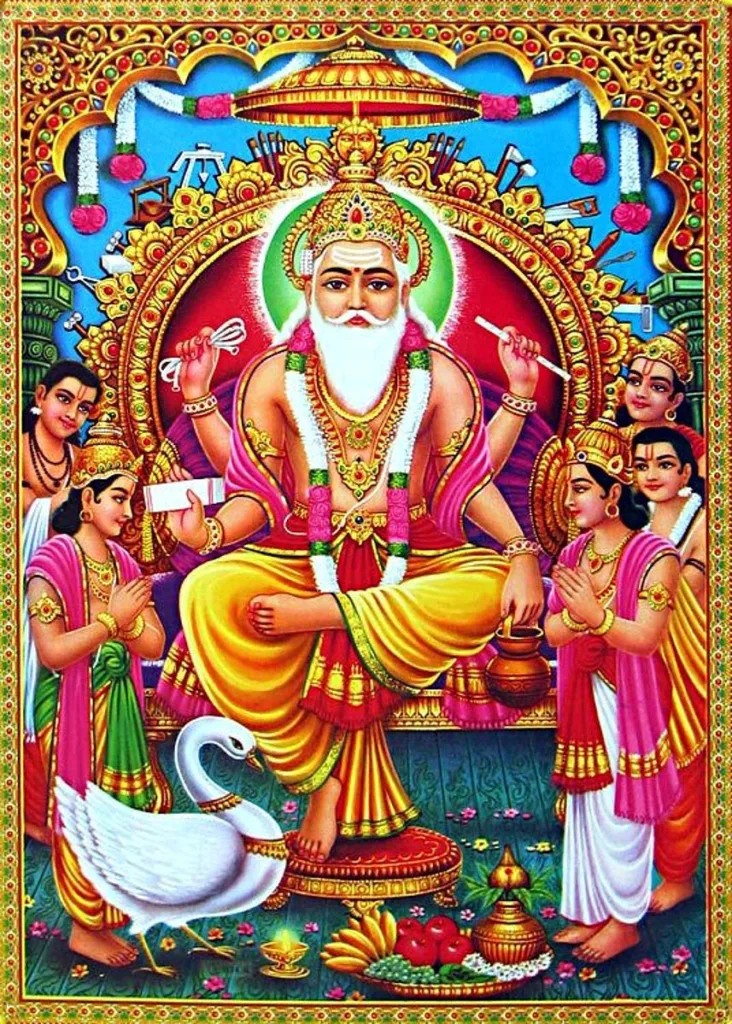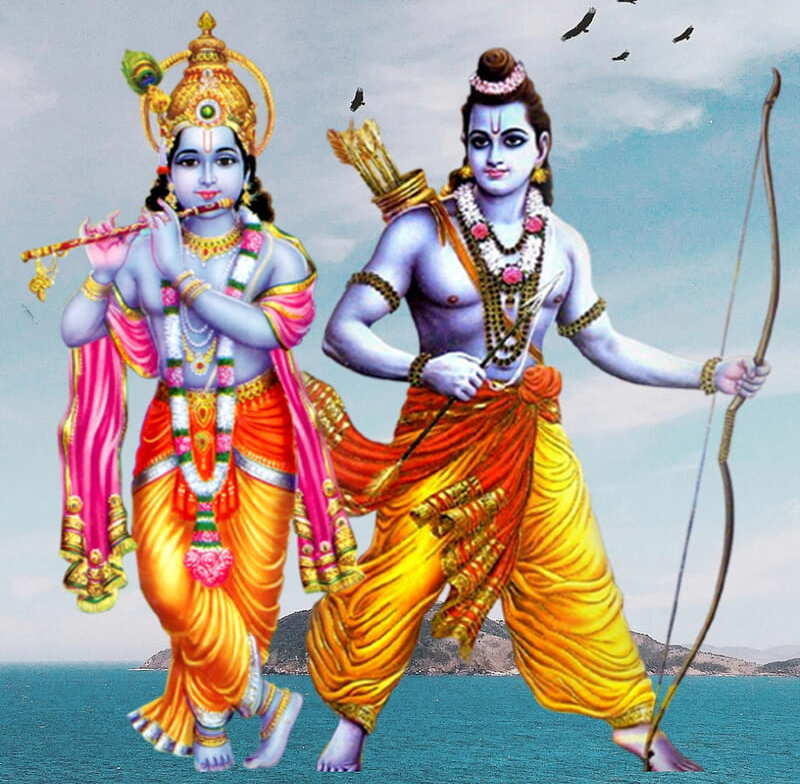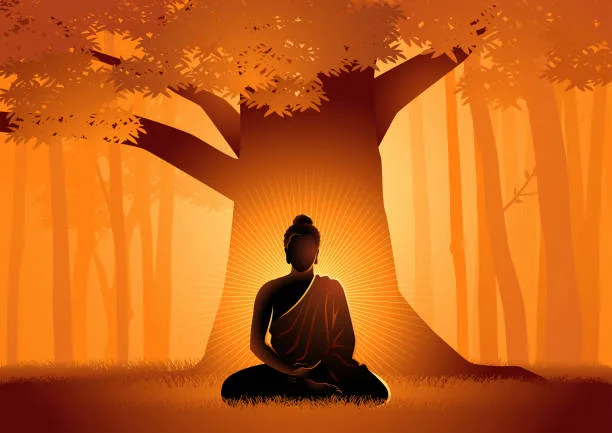The concept of a divine architect, a creator or supreme being responsible for the intricate design and order of the universe, has been a cornerstone of many religious and philosophical traditions throughout history. This belief, often intertwined with notions of divinity, providence, and cosmic purpose, has inspired awe, wonder, and contemplation for countless individuals. In this Blog, we will delve into the multifaceted concept of the divine architect, examining its origins, manifestations across different cultures, and its enduring influence on human thought and spirituality.
In the vast and intricate tapestry of Hindu philosophy and mythology, the creation of the universe stands as one of the most profound and awe-inspiring narratives. Ancient Hindu texts, such as the Vedas, Upanishads, and Puranas, offer detailed accounts of cosmic creation and the nature of existence, governed by divine principles and celestial beings. Central to this narrative is the concept of the “Divine Architect,” responsible for the design, creation, and sustenance of not just the material universe, but the metaphysical realms beyond it.
When we say beyond it we realize that there is more to what appears in texts and the Granthas and therefore we need to dig deeper by delving into the ancient Hindu understanding of cosmic creation, focusing on the role of the Divine Architect, often associated with the gods Vishvakarma and Brahma, and how these texts interpret the unfolding of the universe. Through their symbolism and metaphysical insights, Hindu cosmology offers a spiritual vision of the cosmos as a manifestation of divine will, purpose, and eternal principles.
The Concept of Creation in Hindu Cosmology
The idea of creation in Hinduism is not a singular event but a cyclical process. Unlike many Western cosmologies, which view the creation of the universe as a one-time event, Hindu cosmology envisions an eternal cycle of creation, preservation, and destruction. This cycle is governed by the concept of kalpas, which are vast periods that correspond to the birth, existence, and dissolution of the universe.
At the heart of this cyclic process is the belief in Brahman, the ultimate reality and source of all creation. Brahman is the unmanifested, formless, and infinite essence from which everything emerges. Creation in Hindu philosophy is seen not as an act of external construction but as an emanation from Brahman. The universe, in this sense, is an expression of divine energy that takes various forms and shapes.
Vishvakarma: The Divine Engineer

One of the most prominent figures associated with cosmic creation in Hindu mythology is Vishvakarma, often revered as the divine architect or cosmic engineer. His name itself means “all-accomplishing” or “all-maker.” Vishvakarma is depicted as the one who crafted the material world, shaping not only the physical realm but also the instruments and structures necessary for human existence.
In the Rigveda, Vishvakarma is described as a supreme god who is both the creator and the source of all arts, crafts, and engineering. He is considered the designer of the gods’ palaces, weapons, and the cities of celestial beings. Vishvakarma’s role is not confined to the initial act of creation, but he is also responsible for maintaining and repairing the universe, constantly reshaping it to ensure cosmic order, or rta.
His influence is seen in the construction of grand edifices like the Golden Lanka, the city of Dwaraka, and the Pushpaka Vimana (a flying palace). These structures symbolize the divine nature of human aspirations, where even human creativity is viewed as an extension of divine will. Vishvakarma represents the transcendence of art and architecture as spiritual endeavors that reflect the order of the cosmos.
Brahma: The Creator and the Four Yugas
While Vishvakarma is the artisan, Brahma, one of the primary deities in the Hindu trinity (Brahma, Vishnu, Shiva), is often regarded as the creator god, responsible for the manifestation of the physical universe. According to Hindu cosmology, Brahma’s creation process marks the beginning of a cosmic cycle, often referred to as a yuga.
Time in Hindu cosmology is divided into four yugas or ages:
- Satya Yuga (Golden Age) – The age of truth and virtue, where Dharma (righteousness) is at its peak.
- Treta Yuga (Silver Age) – A period of declining virtue where Dharma loses one-fourth of its strength.
- Dvapara Yuga (Bronze Age) – Further deterioration of Dharma, where half of the world’s goodness is lost.
- Kali Yuga (Iron Age) – The age of darkness and ignorance, where Dharma is at its weakest.
Brahma is said to create the universe at the beginning of each cosmic cycle, and it lasts until Shiva, the destroyer, brings it to an end, only for the cycle to begin again. This cyclical view of time, tied to creation and destruction, reflects the eternal nature of the cosmos in Hindu thought.
Brahma’s act of creation is described as a process of srishti (creation), where he uses the energy of Brahman to bring forth the universe. He is depicted with four faces, symbolizing his ability to oversee the four directions of space and the four Vedas, which represent sacred knowledge. Each face signifies his mastery over the different aspects of creation, and his wisdom ensures the unfolding of cosmic order.
Cosmic Elements: The Five Great Elements (Pancha Mahabhutas)
In ancient Hindu texts, the creation of the universe is often described in terms of the five great elements, or pancha mahabhutas. These elements—earth (Prithvi), water (ap), fire (agni), air (vayu), and ether (akasha)—form the fundamental building blocks of the physical universe. The combination of these elements, under the divine direction of the creator gods, brings the material world into existence.
The Upanishads and other Hindu scriptures also discuss the concept of tattvas, or principles of reality, which include not only the physical elements but also the subtler elements of mind (manas), intellect (buddhi), and ego (ahamkara). The universe, according to this view, is a combination of both gross (physical) and subtle (mental and spiritual) elements, all of which originate from Brahman.
The tattvas are manifestations of divine energy and serve as the building blocks of the universe. This holistic view of creation sees the material world not as separate from the divine but as a direct expression of it. The interplay of the five elements creates a harmonious balance that is maintained by divine forces.
The Divine Architect According to ancient Hindu texts and the Vedas
The Vedas and other ancient Hindu writings assert that nothing existed at first. The Parabrahman alone. It was the ultimate idea that had no start and no finish. The absolute, completely incomprehensible reality. the limitless potential of the heavenly nature. The result and the cause merged into one. timeless. Unlimited. self-made and self-sufficient. It was neither formless nor without form. It lacked no qualities, nor did it lack any. Absolute awareness outside the realm of ideas and perceptions. A constant spark that would eventually bring about every change. The material cosmos was only created when the Parabrahman willed it to be. A universe coming into being at this moment. Observable. Findable. Differentiable.
The first sound, Om, was created by the vibration caused by the Parabrahman’s will. The sound that was made up of every sound. The Maha Tattva, also known as the primal element from which the three gunas, or characteristics, arose, was the first to be created. Rajas Guna signifies action, Tamas Guna signifies destruction, and Sattva Guna signifies preservation. The Pancha Tattva, or the five physical elements, emerged from the interaction of these three gunas. Earth, Fire, Water, Air, and Ether. They worked together to manifest Prakriti or nature. The five senses were also created by the gunas. Senses of touch, hearing, smell, and taste. The mind would control the five sensory organs that would determine these. Perception has emerged with matter.
Perception has emerged with matter. Now the water gushed and drenched everything. Water, water everywhere, but there was nothing to submerge. Like a lily pad over a pond, the Parabrahman appeared as a divine being floating over these waters. This entity got its name since its home is called “ayana” and its water is called “nara.” The Narayana. Now, the water received its own seed from the Parabrahman. After the seed was fertilized, the water nourished it and eventually produced an egg. An egg of gold that gleamed like a disc of light. This egg, or anda, became known as Brahmanda because the Parabrahman generated it. the universe. Now, as Vishnu, Narayana emerged from the egg. The One Who Pervades All.
Sattva Guna is ruled by the Preserver. This golden egg, called hiranya, became known as Hiranyagarbha as it enfolded him like a womb, called garbha. Through the navel of Vishnu, a lotus with fourteen petals blossomed, and Brahma sprang from this flower. One more heavenly expression of Parabrahman. The Maker, sitting atop Rajas Guna. The ancestor carried a mala, or rosary, and a kamandala, or water dish. As a result of his lotus birth from the navel, he also went by the names Padmayoni and Nabhija. Like a pearl growing within an oyster, Brahma divided the egg into two after a year within the Hiranyagarbha. The bottom part became earth, and the higher half became heaven. The sky extended between the two.
The cycle had been started by Brahma, and he was aware of its inevitable conclusion. Creation (sarga) would give way to preservation (sthiti) and then dissolution (pralay). However, a new cycle would begin as soon as the previous one ended. He would repeat this procedure until everything was reduced to the primordial ocean of chaos after each cycle. an unending series of cycles. A cosmos of circles that overlap. Brahmanda had appeared like a fireworks display in the night sky. Brahma sat looking at his recent creation. Subsequently, he descended into a meditative condition, and the four Vedas emerged from his core. Atharva Veda, Sama Veda, Yajur Veda, and Rig Veda.
The Devine Role of Maya and Lila: The Illusion of Creation
Hindu philosophy often introduces the concept of maya, or illusion, when discussing the nature of creation. Maya refers to the idea that the material world, while real in a certain sense, is ultimately an illusion or a temporary manifestation. This illusion veils the true nature of Brahman, which is eternal, unchanging, and formless.
In this context, creation is viewed as a divine play, or lila. The universe, with all its diversity and complexity, is the outcome of Brahman’s playful manifestation. The Divine Architect creates, sustains, and eventually dissolves the universe, all within the framework of lila. The purpose of creation, according to this view, is not merely utilitarian but also a joyful expression of the divine will.
This understanding of creation emphasizes the impermanence of the material world and the importance of realizing one’s true nature, which is identical to Brahman. The goal of human life, in this context, is to see beyond the illusion of the material world and to recognize the unity of all existence.
Cosmic Sustenance and Destruction: The Devine Role of Vishnu and Shiva
While Brahma is responsible for creation, the preservation and destruction of the universe are in the hands of Vishnu and Shiva, respectively. Vishnu, the preserver god, ensures that the universe remains in balance. His incarnations, or avatars, such as Rama and Krishna, appear in times of great cosmic disorder to restore Dharma and protect the world.

Shiva, on the other hand, is the destroyer, but his destruction is not seen as negative. In Hindu philosophy, destruction is a necessary aspect of creation. Shiva’s role is to dissolve the universe when it has fulfilled its purpose, paving the way for a new cycle of creation. This destruction is an act of renewal, where the old gives way to the new in an endless cosmic dance, often symbolized by Shiva’s dance of destruction, the Tandava.
Together, Brahma, Vishnu, and Shiva represent the cyclical process of creation, preservation, and destruction, ensuring the continual flow of cosmic energy.
The Multiverse: Hinduism’s Concept of Multiple Universes
One of the fascinating aspects of Hindu cosmology is its early conceptualization of a multiverse. The Puranas speak of innumerable worlds, each with its own Brahma, Vishnu, and Shiva, existing simultaneously in different dimensions of reality. These multiple universes, or lokas, are inhabited by various beings, ranging from gods and sages to demons and humans.
This multiverse concept emphasizes the boundlessness of creation and the infinite possibilities that exist within the divine mind. The various lokas are also hierarchical, with the higher realms associated with spiritual purity and the lower realms with material attachment and ignorance. This cosmology reflects the Hindu belief in the eternal nature of the soul and its journey through different realms of existence based on karma.
The Divine Architect in Philosophy and Science
Beyond religious traditions, the concept of the divine architect has also been explored in philosophical and scientific discourse. In ancient Greece, philosophers like Plato and Aristotle pondered the nature of the universe and its ultimate cause. Plato, for example, proposed the theory of Forms, suggesting that the physical world was a mere shadow of a higher, ideal realm. Aristotle, on the other hand, emphasized the importance of natural causes and the orderliness of the universe.
In modern times, the concept of the divine architect has often been debated in relation to scientific discoveries and the development of the theory of evolution. Some argue that the complexity and beauty of the natural world point to the existence of a divine designer, while others contend that natural processes alone can explain the diversity of life.
The Divine Architect and Human Experience
The belief in a divine architect has had a profound impact on human experience and culture. It has provided a sense of meaning, purpose, and connection to a higher power. It has inspired works of art, music, and literature, and has shaped the values and beliefs of countless individuals. Moreover, the concept of the divine architect has often been used to justify ethical behavior, social order, and the pursuit of spiritual enlightenment.
Conclusion
The divine architect, a concept that has been explored and debated for millennia, continues to captivate the human imagination. Whether viewed as a supernatural being, a philosophical ideal, or a scientific mystery, the idea of a creator or designer of the universe has had a profound influence on human thought and culture. As we continue to explore the mysteries of the cosmos and our place within it, the concept of the divine architect may offer valuable insights into the meaning and purpose of life.
The ancient Hindu texts present a cosmic vision that transcends the material world and reaches into the metaphysical realms, portraying creation as an ongoing, cyclical process guided by divine forces. The Divine Architect—whether envisioned as Vishvakarma, Brahma, or the cosmic principles of Brahman—crafts the universe with precision, intention, and spiritual purpose. This vision of the universe, interwoven with concepts of maya (illusion) and lila (divine play), emphasizes that the physical world is a temporary manifestation of a deeper, eternal reality.
The intricate details of creation, sustenance, and dissolution reflect a universe that is not only designed but also infused with profound wisdom and divine order. The Hindu cosmology, with its rich symbolism and multilayered understanding of existence, invites us to see the universe as a sacred manifestation of divine energy, where every aspect of life is interconnected, purposeful, and part of the grand cosmic cycle.
The author’s views are his or her own. The facts and opinions in the article have been taken from various articles and commentaries available in the online media and Eastside Writers does not take any responsibility or obligation for them.
Note: Contact our Writers at www.eastsidewriters.com for writing Blogs/Articles on any niche. We have experts in various domains from Technology to Finance and from Spirituality to Lifestyle and Entertainment.






